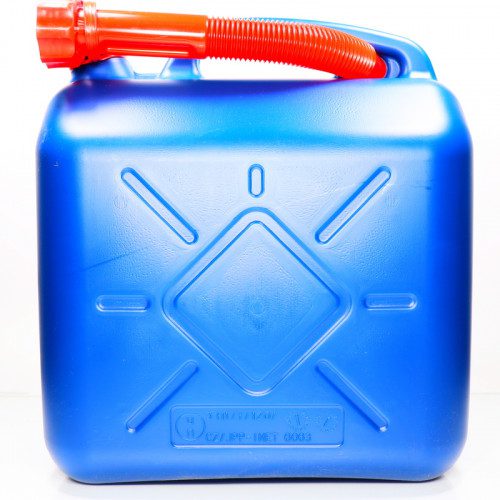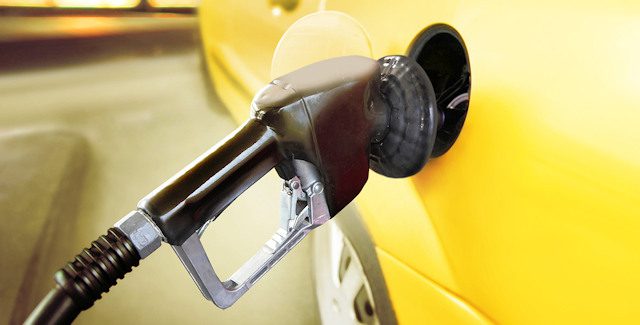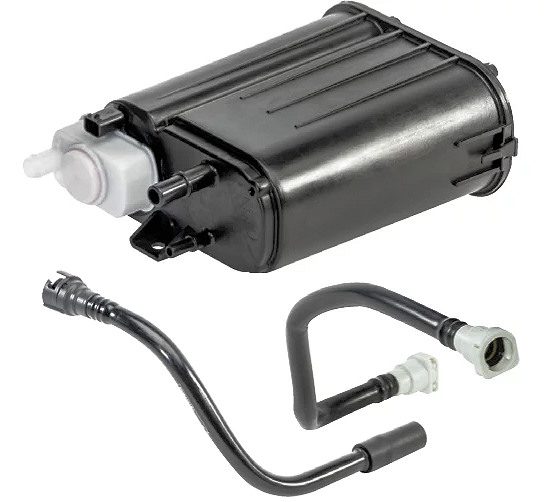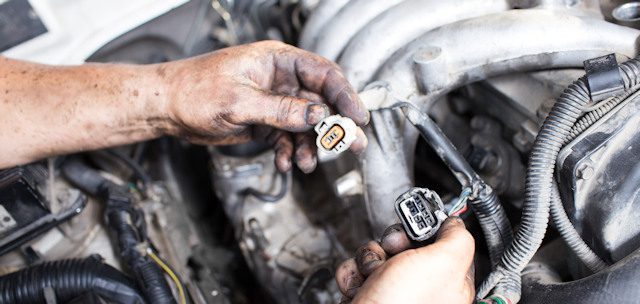
Canister: working principle
Content

As you know, over time, modern cars have acquired a whole set of small "accessories" designed to optimize the operation of the latter, as well as to limit pollutant emissions.
We are not going to talk about a catalyst or even an exhaust gas recirculation valve here, but rather a device designed to capture fuel vapors in the tank. Because, as you should know, the heated gas expands and therefore takes up more space ... Like a can of gasoline, it starts to build up pressure and inflate as the temperature rises, and this pressure is not high for safety reasons. point of view. This ballast is amplified by the evaporation of the fuel, knowing that it takes up more space in the gas state than in the liquid state.

And if at that time we simply provided vehicles with punctured tank caps to relieve excess pressure, the standards became more stringent, and therefore it was necessary to find a way to catch them and avoid them.
What about essences?
The device of the canister applies only to gasoline cars, this fuel is indeed more volatile than others, and therefore its evaporation is greater. Diesels are happy with the simple removal of air through the hose at the outlet of the tank.
How does a canister work?
Remove air from the tank?
Thus, the principle of this device is embodied in a channel connected to the fuel tank, which allows gasoline vapors to pass through and be taken as a charge by a device called a can.
The container contains an activated carbon filter that filters fuel vapors before air can escape through the vent. Because in any case, the pressure in the tank must always be vented to the open air, in order to avoid any risk of overpressure and therefore explosion of the tank (even if this remains very unlikely given their resistance to the acting pressure.). Thus, it is a reservoir in which fuel vapors are stored in order not to release them into the atmosphere.
Vapor treatment? How is the canister cleaned?
As you can imagine, these vapors cannot remain in this reservoir ad vitam aeternam ... Therefore, we need means to get rid of them without throwing them directly into the open air.
The idea is thus simple and logical, we are going to use the latter in the engine, it will be kept more in the process.
For this we will use one of the fundamental principles of gasoline engines, namely the depression that naturally exists at the intake of this type of engine. Now that we have found the power that will allow these vapors to be absorbed, we will need to find a way to manage and regulate it all ...
To do this, a butterfly is placed on the path between the canister and the intake manifold: when it is open, the vapors will be sucked into the engine. It works thanks to an electric drive through an electromagnet, which is controlled by the engine ECU. When powered, it opens, so when the car is turned off or there is a problem, it closes.
Obviously, air must come along with these fuel vapors, so here we will use the canister vent. Otherwise, the reservoir will be sucked into the recess, and then it contracts, as it does with a fruit juice cube that bends as you finish sucking in the precious liquid.
How does the computer know if the canister is full?
There is no detector or other sensor in this device. So that the computer can know what is going on inside, and therefore the amount of steam, it will use a lambda probe.
Which link will you tell yourself? Well, the computer will open the canister towards the engine and, thanks to the lambda, determine the importance of the canister's capacity or not. If the lambda detects a rich mixture after opening, then there are vapors in the canister.
Obviously, the computer will then modulate the throttle opening level and fuel metering by injection, because if the canister offers fuel and oxidizer, it needs to be reduced on the other hand to keep the metering connection when the accelerator pedal is depressed.
Finally, note that certain conditions are required for the solenoid valve to direct the vapors to the inlet, namely a minimum outside temperature (usually 10-15 °) and a sufficiently hot engine (15-20 °). In fact, the vapors must be volatile enough to enter the air intake.
Summary of operation
- Engine not running or canister empty: solenoid valve not energized and inlet closed. Thus, the fuel air pressure escapes through the vent of the adsorber and is filtered from the vapors thanks to the activated carbon filter.
- Engine on: the computer from time to time tries to check the fill level of the canister by slightly opening the solenoid valve. If it detects (using a lambda) that it is well filled, it then clears it, opening it until the vapors are gone. If empty or lightly loaded, keep the solenoid valve closed (which is natural when not supplied).

Canister and ethanol?
When you refuel, the ECU is wary of the presence of ethanol, so it performs tests on its own to determine it and therefore adapt. Indeed, the stoichiometric dosage of ethanol is not the same.
Canister problems?

Several problems can arise, such as failure of the solenoid valve. If you feel something like a suction cup when you remove the fuel cap, the canister vent may be clogged.
Symptoms indicating a canister problem?
Since this is a pollution control device, the engine warning light will illuminate (the principle of this warning light is to warn of excessive engine pollution, so it does not necessarily indicate something serious).
Therefore, we also note the phenomenon of plug stuck (suction effect when you take out the plug to refuel) or even problems with starting and irregular idling ...
Testimonials from reviews
Here are the testimonials from the testimonials posted on the site on test sheets. You too can testify and be posted here through this (or through the comments at the bottom of the page). Thank you all for your kind participation ...
Peugeot 308 (2013-2021)
1.6 THP 205 for GT 2015 125 : the screen changed 20 km, the train behind is noisy, recall to 000 the car starts up on 100 cylinders, stops on the side of the road, starts up again and runs normally. 000 month after rebelotte, candles and reels, the concession management changed. 3 month start again, return to a broken dealership in the Alps with a shutdown at full acceleration, there a mechanic known as pb known in peugeot, factory default valve in the gas tank, gasoline goes to the tank canister, then spark plugs are suddenly poured into the intake manifold ... great luckily the car is still serviced by Peugeot, the tank has been completely replaced for € 1000 invoice, customer service survey, 50% pays Peugeot plus car loan Uf, after 6 months of hardship ...
1.2 Puretech 130 ch Manual Box / 55.000 км / 2016/17 ″ / Gt Line : Hello, a few problems Squeaky rear axle, solved with expansive foam Engine contamination, which causes the car to “scratch” Spark plug burned out at 48.000 km Fuel tank replacement, canister HS (fuel leak from canister when a complete filling is done, instead of sucking in gas, it sucks in liquid, hence a malfunction), so a complete replacement of the tank car, which still touches 55.000 km from time to time. There was a malfunction and since this is an invoice sequence 17 my car broke down Symptom the car grazed weakly at a speed of 06 km / h on the way back, on the way back the car is even more jerky and with safety at a speed of 2020 km / h, then 50 km / h on a hill Car picked up a Peugeot ERROR The reason was explained by the mechanic 60 with a spark plug, which caused a short circuit, so the car is running on cylinder 30. 1 car crashed again, in the city, impossible to restart. The car was transported to Peugeot, the air intake was cleaned due to the dirt of the valves. The estimate falls by 904.28¤ with 50% participation of Peugeot, needing a car, I do not delay and accept the situation. The car was returned to us on 11/07 with an oil change. Since the car has been rebuilt, oil leaks appear on the ground, if you look at the oil level, it is clearly above the maximum and the car is not in good condition. shape and showing power loss. We send it back to Peugeot 27 to explain the problem, we return it 07, they have no problem with the car. Peugeot, diagnostics are falling, we need to change the tank, Peugeot immediately offers 10%, please make a file in Peugeot for better support. She offers 60% because the car comes from Germany and the maintenance was not done at home. July 1995 2002 city Legal guarantee of conformity of vehicles purchased in Europe. With regard to maintenance, the benefits of the commercial warranty granted to it during the meaning of clause L. 1400-2002 are not subject to the provision of repair and maintenance services not covered by this warranty by a network repairer approved by the manufacturer. " So they were all wrong, over the phone, the mechanic team leader threatened to include safety costs if I didn't make a quick decision on Monday's proposal. Based on my research, the tank is not a wearing part and should last the entire life of the vehicle. I think that due to the many costs Peugeot should take on 100% of the repair costs for replacing the tank (the problem is known and known to everyone except the garage. ) I condemn the hidden flaw in the UFC, what to choose, which gives me a one-month reprieve to accept responsibility. I can't wait for this period, I pay for the repairs. On the 17th I return to my family and up to 12km, I drove the orange engine light for 2020km, which means there is a problem with pollution. The rest 350 km I drive quieter without worrying. I am doing diagnostics in Roady (so as not to fatten the lion), with 6 error pages and the indicator is no longer lit. 03 I return home and again 01 km and again 2021 km and this famous steady amber light with a permanent motor.
Citroen C4 Picasso Spacetourer (2013-2020)
1.2 PureTech 130 ch intensive 2015 75000 km BVM6 : A 55000 Problem with engine jerks, very temporary loss of power and unstable idling, especially in case of heavy use in summer without any indicator lights on the instrument panel. Initial reprogramming of the injection computer during the 2018 recall campaign. A year later, 70000 1200 have the same symptoms again; Defective engine diagnostics cleaning the intake channels + sandblasting the valves + replacing the oil separator. Total 2 ?? XNUMX months after rewinding the engine, stalls, loss of power in degraded mode. solenoid valve diagnostics canister Faulty complete tank replacement with a total cost of 1350 ?? 75% is occupied by Citroën.
Peugeot 206 (1998-2006)
2.0 S16 135 HP Year 1999, 145000 km : Except for routine maintenance, oil change distributor + plate + disc tire, etc. ... Per 100 km canister + water temperature sensor, steering ball joints + rod rod 110 km rear axle for the second time (replaced each time with a new one, this time the problem was corrected in the usual way by installing an oiler) At 000 km clutch + ignition coil + rocker arm cover gasket Crankshaft gasket 2 km
Citroen C4 Picasso Spacetourer (2013-2020)
1.2 PureTech 130 channels : canister out of order faulty, requiring replacement of the tank with canister, gasoline vapor absorber, catalyst for a total amount of 2300 euros on the 44000 km meter.
Audi TT (2006-2014)
2.0 TFSI 211 hp Quattro, 6 Stronic gearbox, 100.000 км, 2012, luxury ambition : Bought for 97.000km, shock absorber cup, problem with starting -> activated carbon tank canister
Citroen C4 Picasso Spacetourer (2013-2020)
1.6 THP 165 channels 1.6 THP 165 channels EAT6 Exclusive : HS panoramic sunroof immediately after the end of the warranty. 80% of repairs are covered by Citroen (the rest 280 ¤ at my expense) Engine problem due to malfunction canister By itself, due to the design flaw of the tank. Repairs supported by Citroen 50% (the remaining 490 ¤ at my expense) Blind spot detector that turns off for no reason
Peugeot 206 (1998-2006)
1.4 75 h 126000 km; BVM 5; 2003; XT Premium : Hello, my Peugeot 206 1,4 petrol 75 CV engine from 03/2003 stalls from time to time when I am at a roundabout or at a stop sign (often when downshifting at 3rd gear per second). When this happens, the machine reboots without any problems. The car starts every morning. Several parts replaced: spark plugs, ignition coil, idle speed control, intake pressure sensor, T ° sensor, TDC sensor and throttle body removed and cleaned. The diagnostic case does not find any DTCs. Accidental failure can often be cold or hot, but with T ° ext. Coldly. Did you know this kind of PB? Thanks in advance ... PS I'm going to replace the solenoid valve canister... I read in a special issue of the ARGUS newspaper that this could be the reason for my p.b. ???
Citroën C5 (2001-2008)
2.0 i 16v 140 ch 06/2005 boite user manual 151000 km version pack : boot lid cylinders, AVD caliper, passenger power window mechanism, canister.
Opel Zafira (1999-2005)
1.8 125 h.p. Mechanics : hello, I have an Opel zafira gasoline from 2003 18 16v the car on the track is scratched and loses a little power and the fuel level indicator slowly goes to zero and when I open the fuel tank cap, the pressure gauge is reset normally spark plug change the fuel filter change the air change the filter, replace the ventilation valve and canister merci
Mercedes SLK (1996-2004)
200 ch mec 136/05, 2000 km, meca gearbox. : The engine switches off at any time and at any time. restart is not possible, when the ignition is turned on, the warning lamps on the instrument panel light up, the radiator fan runs at full speed, but the starter does not work, the engine is turned on with protection. the only solution, wait a few minutes (variable time usually 5 to 15 minutes). The engine is then finally restarted .RAS in garage diagnostics. I replaced (as advised) the coolant temperature sensor on the front of the engine and since the problem seems to be gone. Apparently, the sensor sent erroneous information to the computer, which ensured the safety of the engine by turning off the power supply and starting the fan (assuming that the engine was overheating). * fuel leak from the fuel hose canister (HS hose) * center console coating is very fragile and peeling. (The problem has been found on almost every slk I've seen). a small amount of sawdust in the transmission oil when changing. in all cases, rather slow gear changes. * slight oil leakage on the rear axle.
Renault Clio 1 (1990 - 1998)
1.4 from 80 channels 1.4i BVM 5, 135 km, ELLE series : Electrovalve PB de canister; ignition head; Wheel covers that swell with moisture and wear out.
Peugeot 307 (2001-2008)
1.6 16v 110 ch XT Premium Pack Electric + Sunroof, 2001, 175 km, Manual Gearbox : - canister– Suspension triangle (HS bushing) – Comodo replacement (com2000) (flashing light) – HS anti-roll bar links – Gearbox bearing
Citroën Xantia (1993-2002)
2.0 i 120 hp. Year 1995 – 200000 km VSX : fuel pump - purge filter canister
All comments and reactions
Dernier comment posted:
Johnny (Date: 2021, 07:31:04)
After refueling the 2014 Ford Escape, it won't start again. So I have to step on the gas pedal and hold it halfway, and it starts again with difficulty, and suddenly it moves forward, everything is fine. I replaced the canister valve and the problem returned shortly after. P code 1450, thanks.
Il I. 3 reaction (s) to this comment:
(Your post will be visible under the comment after verification)
Write a comment
What do you think about inexpensive cars

